Late August
As the flowers dry up, so does the nectar. The bees go through another "swarming season" that keeps us on our toes as beekeepers. Healthy hives look for more room, or weak hives look for other options. Swarming is a natural "hive reproduction" process that often results in the established queen flying away with roughly half of her hive-mates to find a new home. The remaining bees have likely created several starts of young queens in "queen cells" to replace the older queen.
I like to get ahead of this natural urge by raising queens and making artificial swarms and "Nucs" or Nucleus colonies. One of the potential risks of swarming is that the new queen either doesn't make it back when she flies out to mate-- queens are large, not experienced fliers, and tasty to birds and dragonflies -- or she doesn't mate well and can't lay many eggs. In this case a hive is rather doomed. I try to catch nucs that end up like this and either give them a new queen or mix the back into a nuc or hive with a good queen.
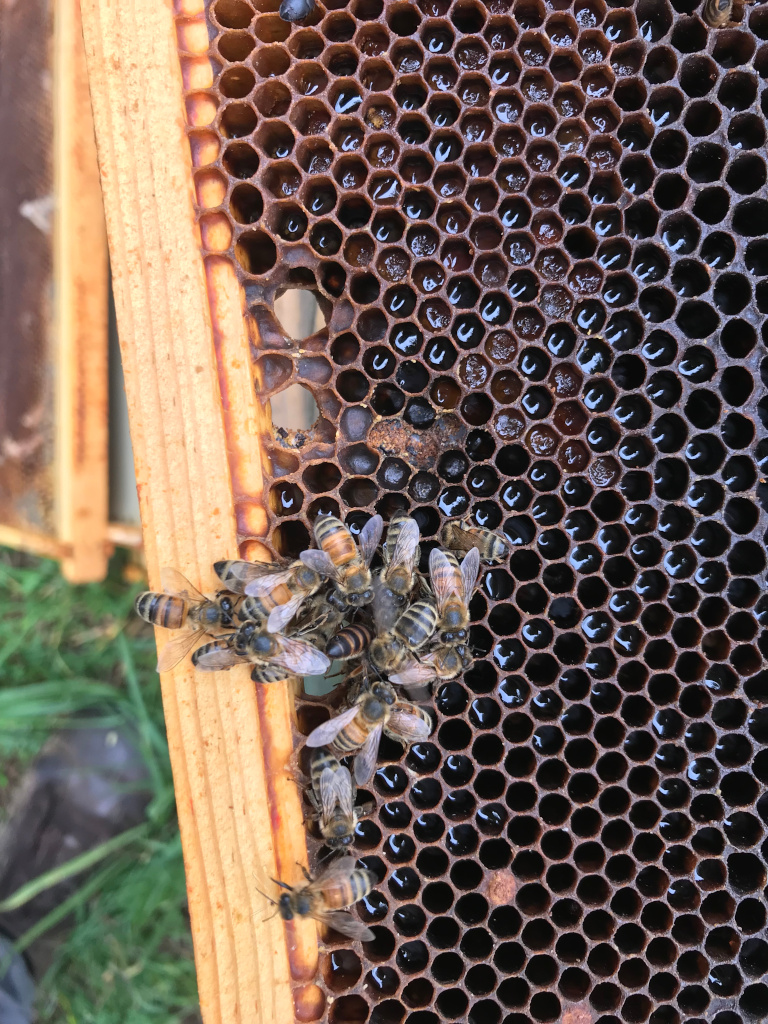 This queen is being harassed by her worker bees. I found no eggs in the hive, and few bees at all. The bees are doing what's called "Balling the queen" here, working to kill her so that they might replace her, but they have no eggs to raise up as a queen. This hive is doomed even though she's escaping their harassing. [ the queen is the one with her hind end toward us in the middle, going through a "communication hole" to the other side ]
This queen is being harassed by her worker bees. I found no eggs in the hive, and few bees at all. The bees are doing what's called "Balling the queen" here, working to kill her so that they might replace her, but they have no eggs to raise up as a queen. This hive is doomed even though she's escaping their harassing. [ the queen is the one with her hind end toward us in the middle, going through a "communication hole" to the other side ]
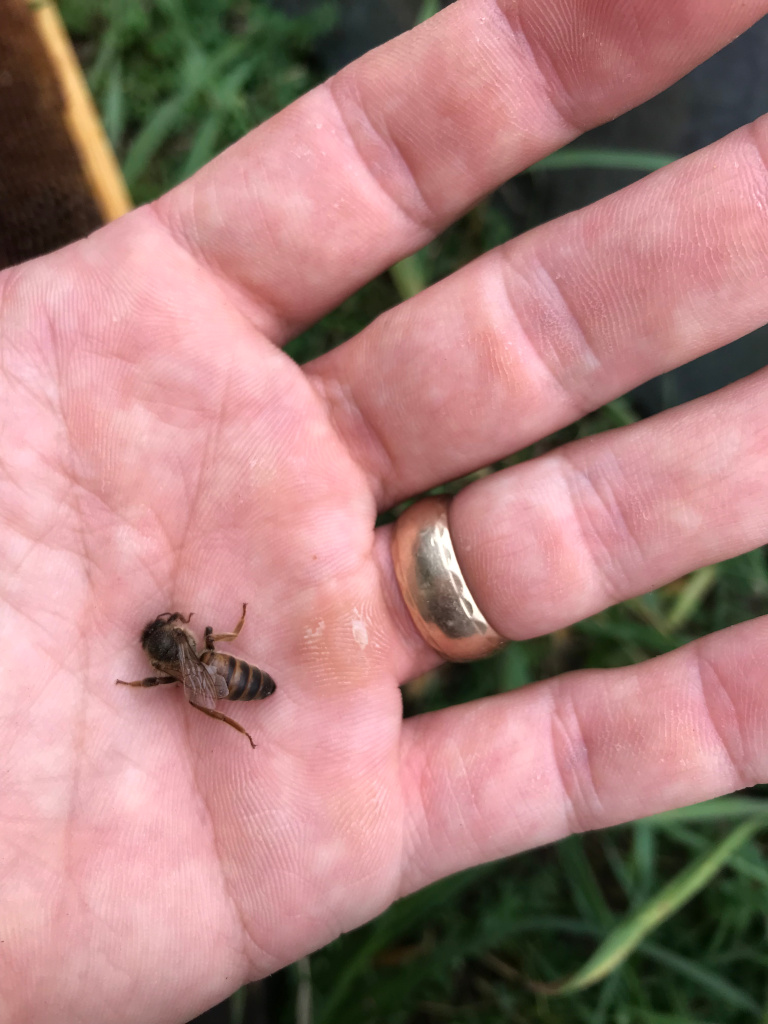 She fell off the frame as I was inspecting the hive. She's not dead, but won't make it. I used the frames in her hive to bolster other hives that were growing and would make use of the ample stores of honey her workers had stored before she stopped laying eggs.
She fell off the frame as I was inspecting the hive. She's not dead, but won't make it. I used the frames in her hive to bolster other hives that were growing and would make use of the ample stores of honey her workers had stored before she stopped laying eggs.
The reason I try to get to these hives frequently is because if the bees aren't tending them, something else will. Mice will find weak hives in the winter and move in for the warmth and the fresh food, they wreck the wax and eat the bees if the bees don't drive them out. Thats bad. Hive beetles and mites and plenty of other pests will take up in unguarded space and can cause problems for other nearby hives as they make more pest pressure. That's really bad. But a night in the freezer will kill hive beetle eggs and a strong hive can offset most of that pest pressure.
Which brings me to a thought that's been floating around in my head for a while. Before I was a beekeeper I was familiar with the phrase "...moth and rust destroy" but it didn't have the meaning it does now. Sure I had seen cars rusted so bad that the sheet metal was held together by the paint. I understood that part. But moths... eat your sweater? That didn't ring as something quite warranting the label of 'destruction.' Allow me to introduce you to Wax Moths.
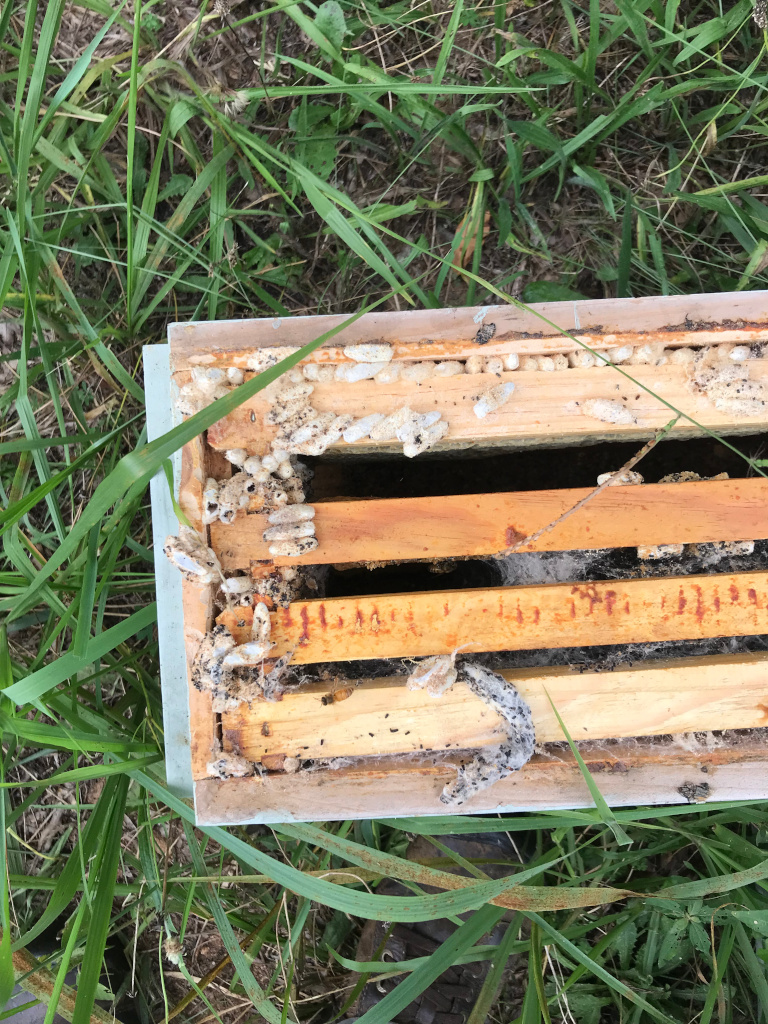
Wax Moths Destroy
We have two "wax moths" in North America, the Greater Wax Moth1, and the Lesser Wax Moth2. I propose that both are poorly named. Neither is great, and neither is lesser of a pest than the other. One will rip big holes in your wax where you would much prefer bees to live, and spin webs between frames blocking all access while they tear it all apart and lay eggs. The other will do rather similarly, if on a slightly smaller scale given that the adults aren't quite as big, but they have an ace up their sleeve in that their eggs don't seem to be killed off by a trip to the freezer.
A hive inspection that turns up too many wax moth indicators will have me muttering like Smeagol until I find better news so I'll take you there as well.
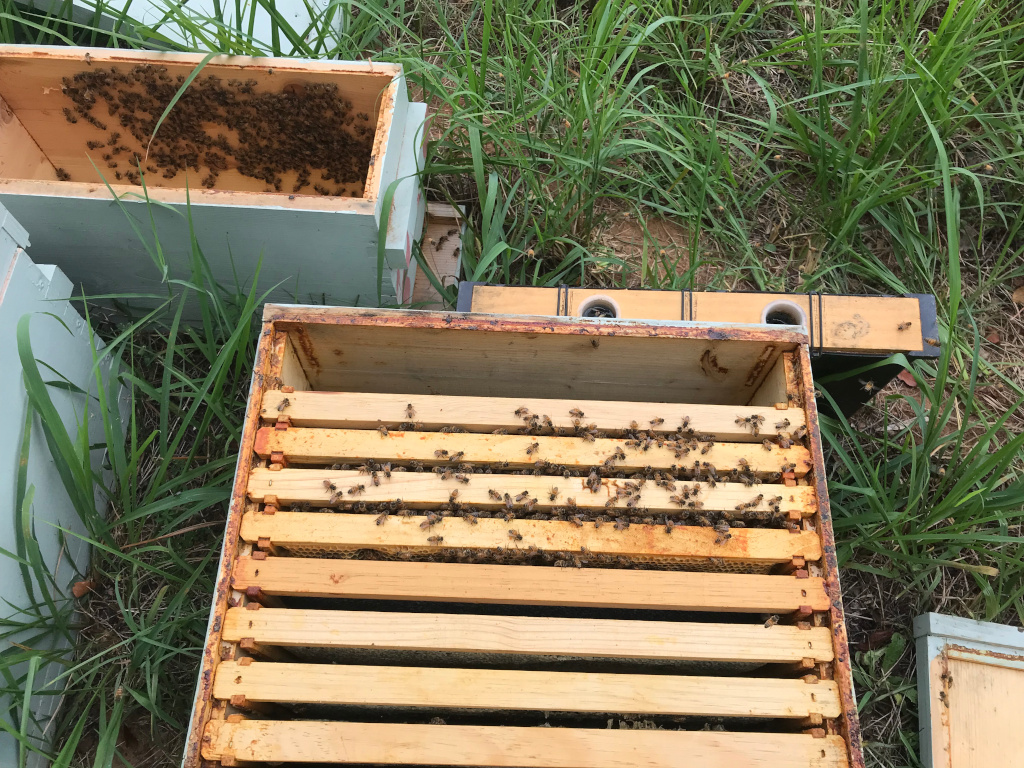
The box on the top of frame is a Nuc that did very well. The queen had a four-frame hive packed with food and brood3 so I stepped them up to a full size box. This is what I like to have at this time of the year. This is a fresh start for a hive that will build on the fall flowers, and pack away resources for the winter. They'll be ready to put up some honey in the spring.
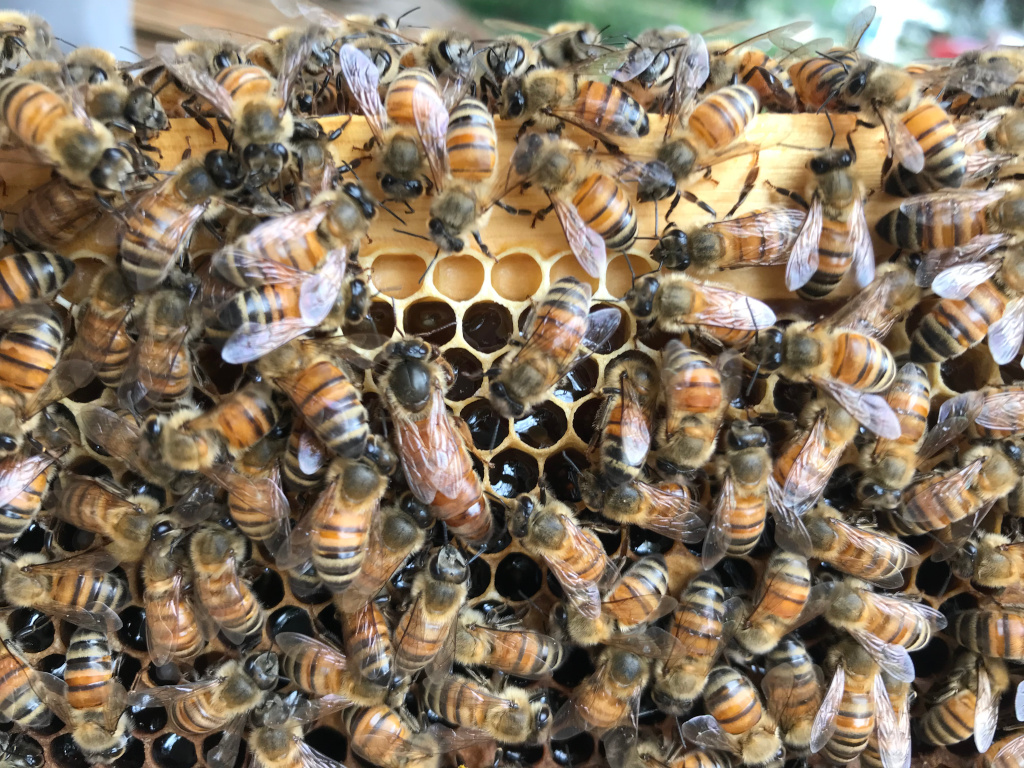
And this is a good queen. A good queen is always looking for a spot to lay an egg, and a good hive always taking care of their queen.
Be well, and do good work -Cameron
https://en.wikipedia.org/wiki/Galleria_mellonella↩
https://en.wikipedia.org/wiki/Lesser_wax_moth↩
Food is both nectar or honey, and pollen or "bee bread". The adult bees eat the honey, and they feed the larvae with protein from the bee bread. Brood is what we call the bee babies in their developmental stages -- eggs, larvae, and pupae. Most beekeepers call larvae and pupae uncapped and capped brood↩